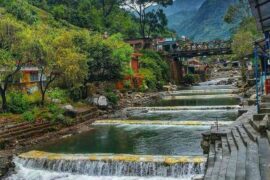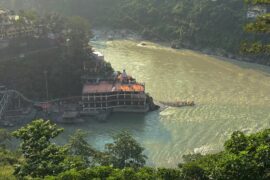Discover No. 1 Adventure Har Ki Dun Trek in Uttarakhand
The Har Ki Dun trek is famous for its picturesque transformation across seasons. During summer and spring, the valley enjoys mild and pleasant temperatures, creating an ideal environment for trekking.
The landscape bursts into vibrant hues as flowers bloom profusely, adding a kaleidoscope of colors against the backdrop of majestic mountains. Wildlife enthusiasts can delight in spotting a diverse range of fauna amidst the lush greenery.
Har Ki Dun, known as the Valley of Gods, is a breathtaking destination nestled in the Garhwal Himalayan region of Uttarakhand, India.
It lies at an altitude of 3500 meters within the Govind Ballabh Pant National Park. This valley combines ancient cultures, lush scenery, and mythical tales, making it a year-round high-altitude trekking paradise.
Overview Har Ki Dun Trek
The Har Ki Dun trek is celebrated for its accessibility and stunning natural beauty. The trail from Taluka to Har Ki Dun is graded as easy, making it accessible for trekkers of various skill levels.
This trek traverses through some of India’s most remote villages, which remain untouched by modern civilization. The local people are known for their warmth and hospitality, adding to the enriching cultural experience of the trek.
The Best Time: Har Ki Dun Trek
During winter, from December to March, the valley is adorned in a blanket of snow, transforming it into a magical winter wonderland. Despite the snow cover, the week-long trek through Har Ki Dun remains a highly scenic experience.
Trekkers encounters to jaw-dropping views of towering Himalayan peaks such as the Swargarohini Group, Kala Nag (Black Peak), Bandarpoonch, and many others. These majestic vistas provide a dramatic backdrop to the trek, creating unforgettable memories for those who venture into this enchanting valley.
Suggested Read: Sankri Village Uttarakhand: a gateway to trekkers paradise

Highlights of Har Ki Dun Trek:
Day 1 – Journey to Sankri (Altitude – 1900 mts):
- The trek begins with a journey starting from Dehradun and progressing through scenic landscapes. Passing by Mussoorie and Purola, known for their lush greenery and serene views, the route culminates in Sankri. Nestled amidst snow-capped mountains, Sankri offers a tranquil setting and serves as the base village for the trek.
Day 2 – Trek from Taluka to Pauni Garaat (Altitude – 2500 Mts):
- From Sankri, a one-hour drive takes trekkers to Taluka, where the trekking trail commences. The path initially winds through stone trails and opens up to the picturesque Supin river. Passing through forests teeming with rare Himalayan birds, the trek culminates at Pauni Garaat, an extension of the rustic village of Seema, offering a campsite amidst ancient surroundings.
Day 3 – Trek from Pauni Garaat to Kalkattiyadhaar (Altitude – 3000 Mts):
- Crossing the Seema bridge over the turquoise Supin river, the trail ascends alongside the river. Spectacular views of the Saraswati Range accompany trekkers, leading them to Kalkattiyadhaar, a vast campsite offering panoramic vistas of prominent peaks like Bugyal Devsu and Mt. Black Peak.
Day 4 – Summit Day (Altitude – 3500 Mts):
- Beginning early, trekkers cover the longest stretch of 18 km, reaching the summit of Har Ki Dun. En route, views encompass the Har Ki Dun Peak, Jaundhar Glacier, and Swargarohini peak. A visit to a Shiv Temple provides a serene lunch spot amidst nature’s splendor before returning to Kalkattiyadhaar.
Day 5 – Trek from Kalkattiyadhaar to Gangaar village:
- Descending towards Gangaar, known as the hanging village of Har Ki Dun, the route passes by Kanda Rani Temple. Here, glimpses of local culture and wild berries add to the trekking experience, culminating in the serene village of Gangaar.
Day 6 – Trek from Gangaar to Sankri:
- Retracing the riverside trail of Supin, the trek concludes back in Sankri. After a refreshing journey through nature’s embrace, trekkers can explore the charming Sankri market for souvenirs and local delights, marking the end of this remarkable journey through the Valley of Gods.
Conclusion
Har Ki Dun Trek, with its awe-inspiring landscapes and cultural richness. It stands as a testament to nature’s unparalleled beauty, offering trekkers a transformative experience amidst the mystic mountain ranges of the Himalayas.




Comments are closed.